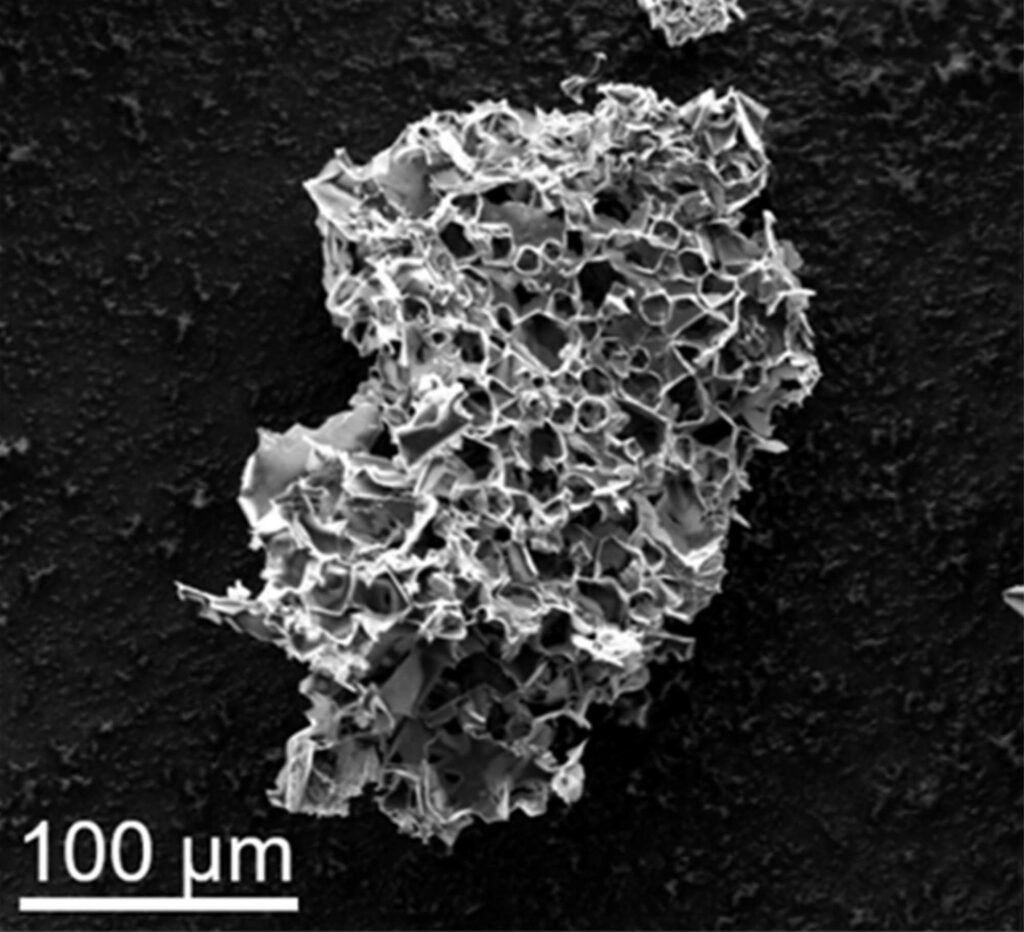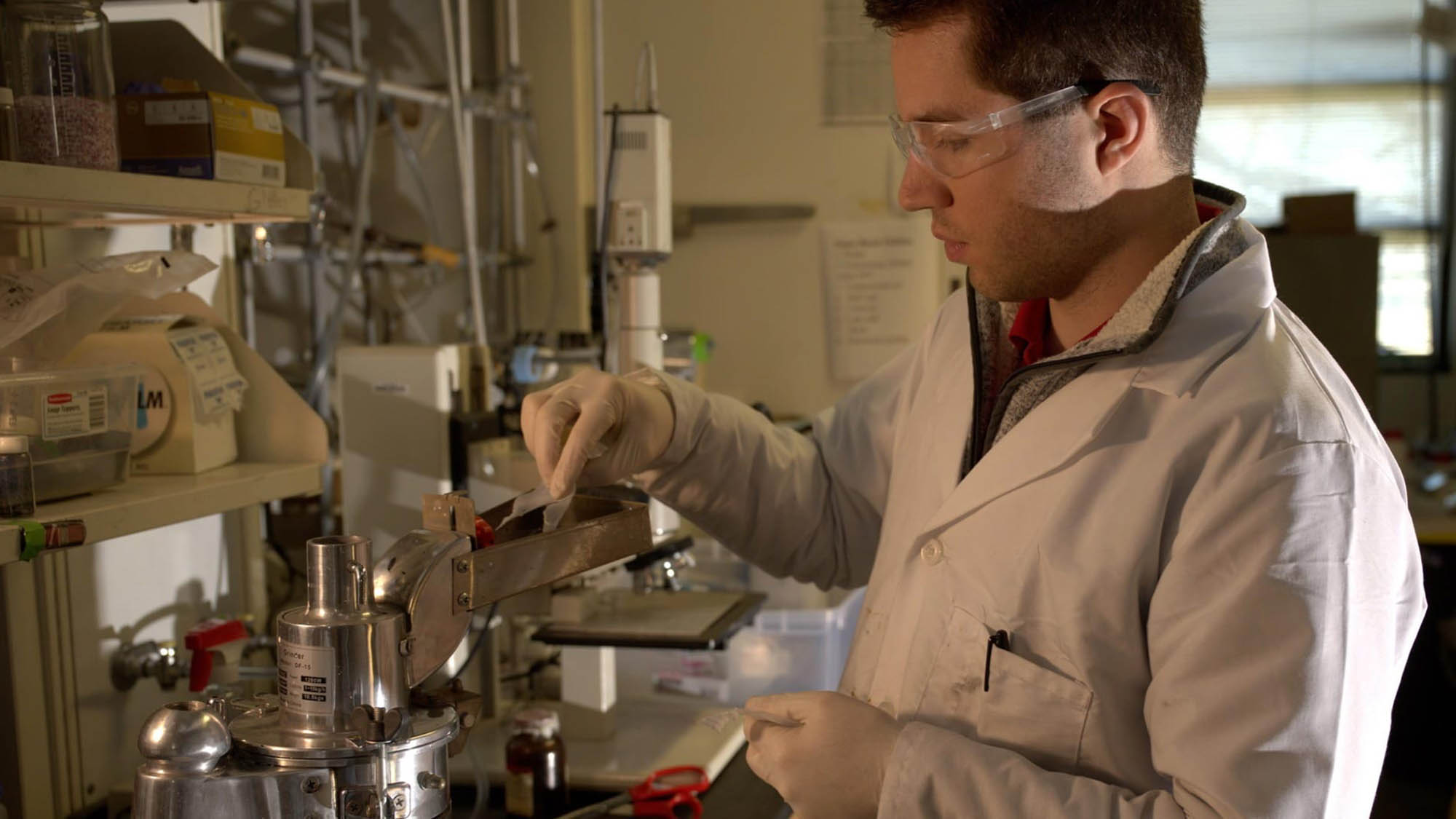Scientists have discovered a double environmental breakthrough – how to capture carbon dioxide by using heat-treated plastic waste.
The breakthrough came from boffins at Rice University, in the city of Houston, in the US state of Texas.
Researchers James Tour, Wala Algozeeb, Paul Savas and Zhe Yuan found that when potassium acetate is present during the pyrolysis of plastic waste, the resulting particles are able to capture carbon dioxide.
Pyrolysis is the chemical change brought about by the action of heat.
The scientists say that heating the plastics with potassium acetate present produces particles able to hold up to 18 per cent of their own weight in carbon dioxide at room temperature.

(Tour Group/Newsflash)
This is believed to be an improvement on the current process to pyrolyse plastic -known as chemical recycling – which produces oils, gases and waxes, but the carbon byproduct is almost useless.
Tour said in a statement obtained by Newsflash: “Point sources of CO2 emissions like power plant exhaust stacks can be fitted with this waste-plastic-derived material to remove enormous amounts of CO2 that would normally fill the atmosphere.
“It is a great way to have one problem, plastic waste, address another problem, CO2 emissions.”
And it is even cheaper, too. It is estimated that the new process would cost up to eight times less than current carbon capture treatments.
According to the scientists, the estimated expense for this carbon dioxide capture would be USD 21 (GBP 16) per tonne, which is far cheaper than the process used to capture carbon dioxide from natural gas feeds, which costs USD 80 to 160 (GBP (GBP 61 to 123) per tonne.
A press release by Rice University said: “To make the material, waste plastic is turned into powder, mixed with potassium acetate and heated at 600 C (1,112 F) for 45 minutes to optimize the pores, most of which are about 0.7 nanometers wide. Higher temperatures led to wider pores.
“The process also produces a wax byproduct that can be recycled into detergents or lubricants.”
Global atmospheric carbon dioxide concentrations are rising largely because of the burning of fossil fuels for energy.

(Jeff Fitlow/Newsflash)
Carbon dioxide is a greenhouse gas – it absorbs heat and releases it gradually over time.
Increases in greenhouse gases are trapping additional heat and raising Earth’s average temperature.
This results in loss of sea ice, accelerated sea level rise and longer, more intense heatwaves.
Carbon dioxide also causes ocean acidification.
Meanwhile, plastic waste can lead to the leaching of toxic chemical constituents into food, drinks and water.
To find out more about the author, editor or agency that supplied this story – please click below.
Story By: Marija Stojkoska, Sub-Editor: William McGee, Agency: Newsflash
The Ananova page is created by and dedicated to professional, independent freelance journalists. It is a place for us to showcase our work. When our news is sold to our media partners, we will include the link here.




